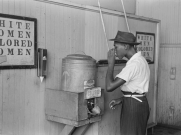CounterCurrent: Week of 05/19/25
CounterCurrent: anti-Semitism Edition is a monthly newsletter of the National Association of Scholars’ newsletter, which will document, expose, and explain the anti-Semitism on today’s college campuses.
80 students at Columbia University were arrested by New York police after taking over the campus’s Butler Library. The student protestors stormed the library shouting “Free Palestine” in the middle of finals week, and proceeded to hand out pamphlets commemorating a terrorist named Basel Al-Araj. Police made arrests, the campus administration handed out suspensions, and the Department of Homeland Security stated its intent to investigate the students’ visa statuses. It was otherwise a typical, no-good, very bad day for Columbia, albeit with rather new outcome of consequences for the campus agitators. What is less expected, is that 61 of the 80 arrested are women—so much for the thesis that men are the epicenter of hate! This strong overrepresentation of women in a destructive anti-Semitic riot is more common than you might think.
Today’s campus anti-Semitism is not the anti-Semitism of yesteryear. It is not connected to Jew-hating narratives derived from Christianity, the Nazis, or old tropes from the Ku Klux Klan. Today’s campus anti-Semitism is at home on the Marxist left and animated by the ideas of Critical Theory. It is in this ideology that today’s anti-Semitism needs dissecting.
On the question of how indicative Columbia is of a national trend among college protestors, several studies highlight a greater leftwing shift among women. In the 2024 election, 56 percent of young men voted for Trump, compared to 40 percent of young women. Regarding Israel specifically, a poll conducted by Gallup found that 52 percent of American women opposed Israel’s actions in Gaza. Over the past decade, women have shifted to the left, with young and senior women shifting the most while men have roughly remained consistent.
That the Columbia arrests reflect national trends makes sense at a first glance—after all, political ideology is a central variable driving campus politics. The anti-Semitic campus group, Columbia University Apartheid Divest, which was the premier anti-Israel group until students replaced it with the Columbia Palestine Solidarity Coalition last October, was comprised of a diverse array of left-wing identity-based student groups like Barnard-Columbia Middle Eastern and North African Women’s Association, GendeRevolution, and South Asian Feminisms Alliance. In March, when roughly two dozen protestors took over Barnard College’s library following a bomb threat, nine arrests were made with all but one of the protestors being women.
Of course, Columbia does not reflect the United States as a whole, as the roughly 60-20 split of women protestors is greater than the roughly 60-40 gender divide that emerged during the election, but does reflect higher education’s overall shift towards women. Since 1995, women have outpaced men in going to college and obtaining degrees. In 2021-2022, women earned roughly 60 percent of graduate degrees. Since graduate degrees are the gateway to professorships, this is one potential explanation for the gender disparity among Columbia’s arrestees.
A study last year conducted by the American Council of Trustees and Alumni found that women on average have less civic knowledge about American history and government than their male counterparts. Women also statistically vote more frequently than men. Samuel J. Abrams, a professor of politics at Sarah Lawrence College, anecdotally noted that the students who are “the most judgmental are also the least knowledgeable about the history and realities of political life and public policy. Said students are, more often than not, women.” Certainty and ignorance are a particularly dangerous combination. No systematic study of the gender dynamics of anti-Israel protests or arrests exists. At the same time, national trends do point to a feminization of leftwing activism, with college anti-Israel protests constituting a fraction of a broader trend. In relation to anti-Semitism on campus, broader trends and the history of anti-Semitism itself are useful in offering potential explanations.
Anti-Semitism is fundamentally a bigotry of perceived victimhood. Viewing Jews as power-seeking plotters is a timeless anti-Semitic trope. In the early nineteenth century, Tsarist Russia produced the forged “Protocols of the Elders of Zion” that outlined a supposed Jewish plot for world domination. The Nazi anti-Semitism of the last century was wrapped in an ideology of German victimhood outlined in Hitler’s Mein Kampf, in which Jews were portrayed as orchestrating plots against Germany while being a source of racial impurity. Today’s campus anti-Semites typically portray Israel as a racialized, Western colonial project. An ideology based on victimhood, real or imagined, is ultimately hollow. This is where the increasingly feminine and leftwing nature of campus anti-Semitism might be explainable.
A recent study by the Institute for Family Studies found that liberal women are far more isolated in American life, and far less happy with their lives than their conservative counterparts. The study attributed the isolation depression to liberal women being less likely to be integrated into “church and marriage.” Liberals may scoff at this notion and claim this is an isolated finding, but it is not. Liberal girls in high school were found to have higher rates of depression, but also the sentiment that “someone” seeks to prevent their advancement. Ironically, this same notion was held by conservative high school boys. On a related dynamic, social belonging is cited in terrorism studies as one of the key drivers of radicalization across ideological lines. In stepping back, the theory begins to make sense.
Liberal women who are more socially isolated may be drawn to protests for belonging, while the ideology of fighting a “Western patriarchy” in Israel, Trump, climate change, or other causes offers an explanation for their unhappiness. More research is needed to uncover if there is a women-led movement behind today’s anti-Semitism, and indeed the overall radicalism on campus. For now, the anecdotal evidence is starting to pile up while academia’s thesis that white men are the source of evil continues to crumble.
Photo by SWinxy - Own work, CC BY-SA 4.0, https://commons.wikimedia.org/w/index.php?curid=147639892













